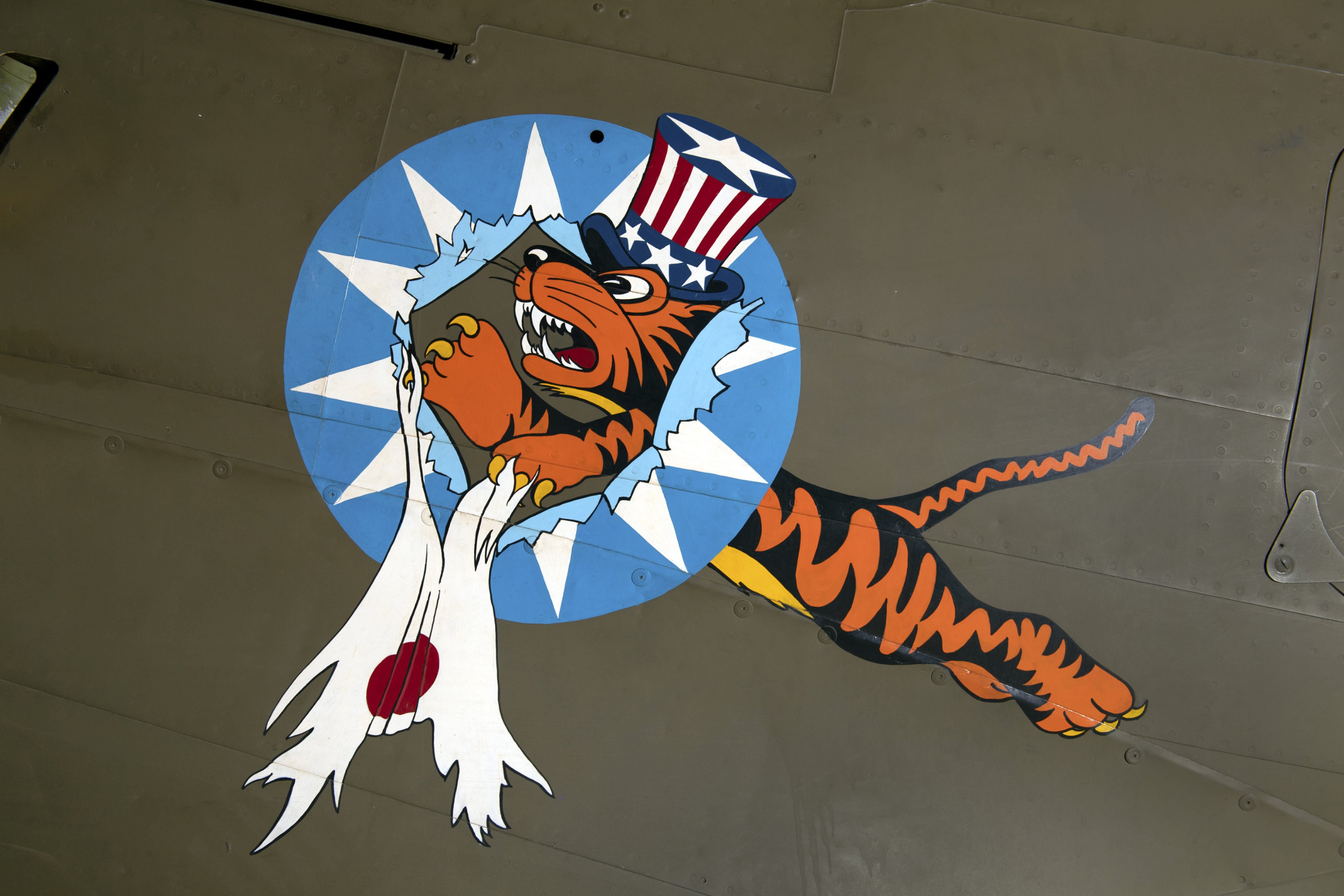
- Japan’s control of the skies over China during World War II was ended by volunteer allied fighter pilots in planes that bore a feisty feline logo made by Disney
Early March 1942: a squadron of Curtiss-Wright P-40 Warhawk pursuit fighter planes rips across the vast blue skies of the Burma-Yunnan border. The roar is immense, but there are few to hear it.
Below is the long and twisting Burma Road, China’s vital lifeline from the Shan State town of Lashio to Kunming, capital of Yunnan province, and within what is, in 1942, termed “Free China”.
The pilots, a mix of American and British volunteers, have had one mission since their formation in December 1941: to defend China’s skies and prevent Japan from gaining aerial dominance, aiming to shoot down as many planes of the Imperial Japanese Air Force as possible.
These foreign-manned fighters flew across western China to Thailand, Rangoon and deep into French Indochina in pursuit of Nakajimas and Kawasakis.
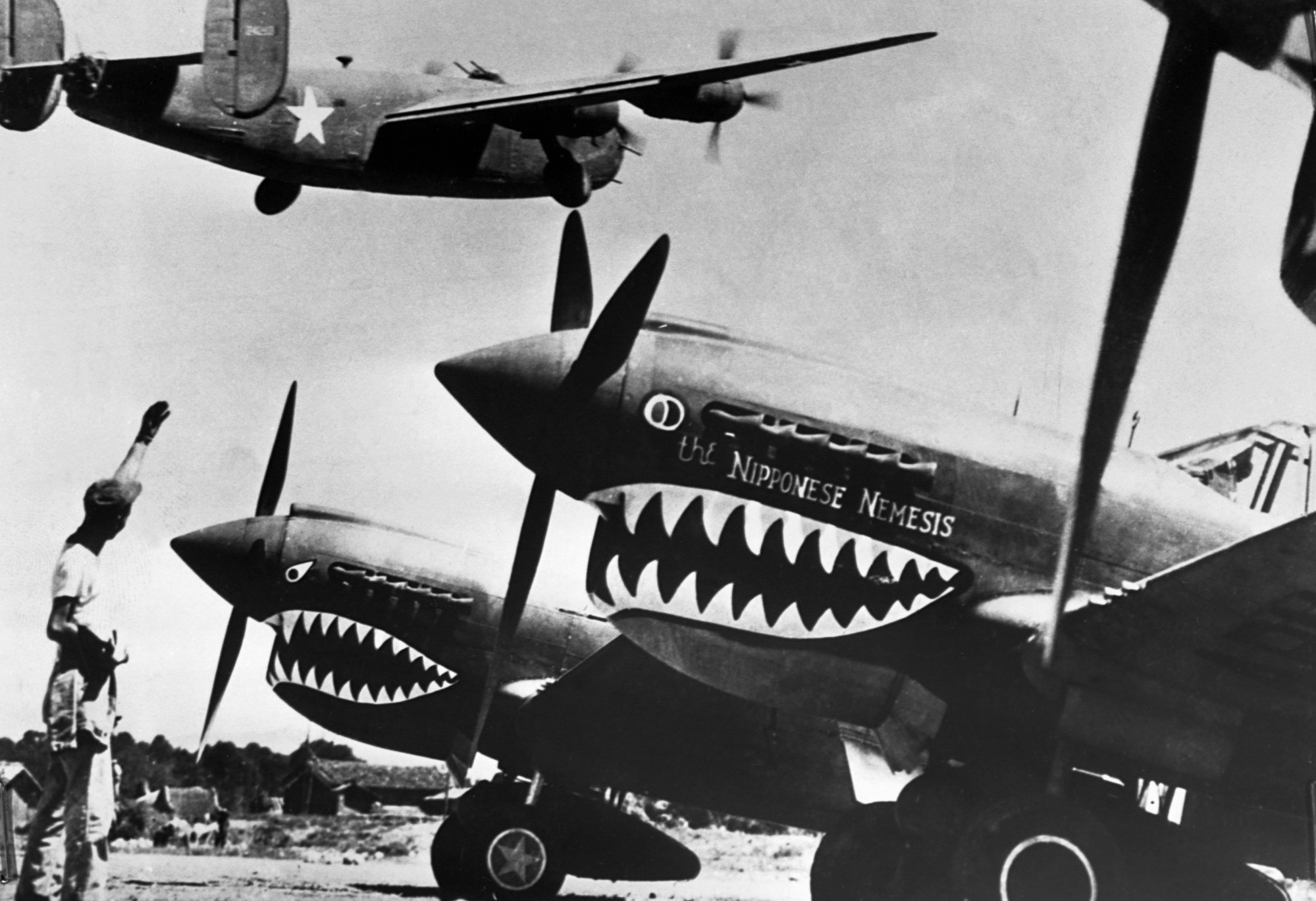
Their numbers never exceeded 60 airworthy planes, formed into three squadrons, but in their first month of full action they shot down an estimated 90 to 100 Japanese aircraft. They destroyed Japanese fuel dumps and scattered supply truck convoys.
They strafed enemy troop concentrations and forced Japanese bombers to divert from blitzing the embattled Chinese wartime capital of Chongqing.

They protected both ends of the Burma Road and everywhere in between to ensure vitally needed medical supplies and ammunition reached Free China forces.
They were experienced pilots who offered their services to China in its time of dire need, when the Chinese Nationalist air force was woefully under-equipped and undermanned.
They were initially known as the American Volunteer Group (AVG) in Washington, and as the International Air Force (IAF) in London.
They were led by the inspiring figure of American Brigadier General Claire Lee Chennault, who had left the US directly for China after his recent retirement.

The world came to know this elite band of airmen as the Flying Tigers. Each plane’s wingtip bore the insignia of Republican China while their nose cones were painted with razor-sharp shark’s teeth and their fuselages with the emblem of a winged flying tiger cub.
As the US recovered from the disaster of Pearl Harbour, regrouped and engaged in total war with Japan across Asia, the country desperately needed a good news story.
And so it went, syndicated in dozens of newspapers across the US, that Japanese pilots, flying the previously uncontested skies over China, were encountering a new and terrifying enemy.
Fast-moving fighter planes, expertly handled, roared towards them, machine guns blazing, a fearsome sight to behold.
The shark-toothed nose cones were introduced in 1941, when the outfit was still mostly known as the AVG. It was thought that the Japanese, coming from a seafaring nation, would be unnerved by being attacked by sharks.
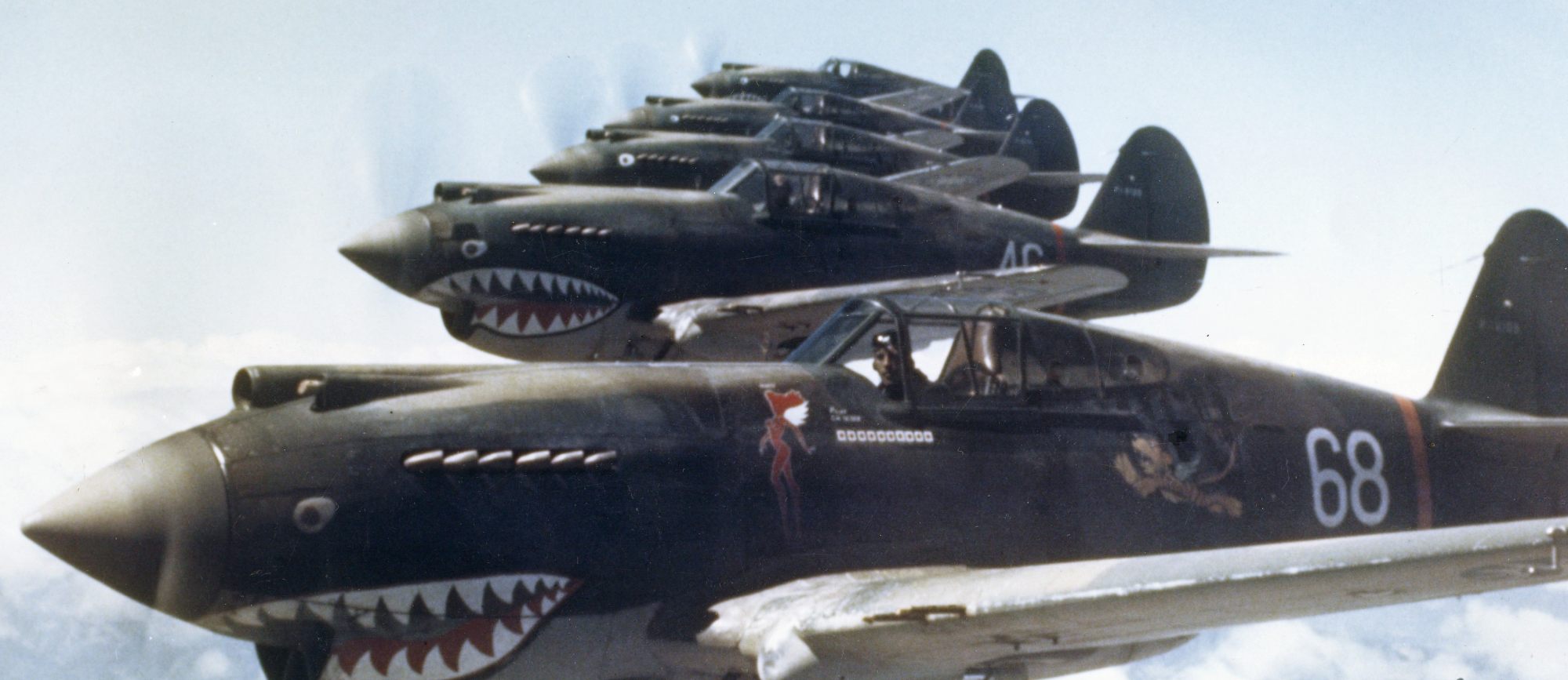

Originally, some British pilots suggested copying it from a German Luftwaffe squadron of Messerschmitt Me 210 fighter planes they had seen in Crete.
The shark’s teeth had then been appropriated by the Royal Air Force in North Africa during the Libyan campaign before the AVG adopted the design in China.
In his 1949 autobiography, Way of a Fighter, Chennault recalled seeing the teeth on the AVG’s squadron for the first time: “With the pointed nose of a liquid-cooled engine it was an apt and fearsome design.”
But as menacing as the teeth looked, they weren’t really an emblem. The AVG needed a logo. And so the iconic motif of the winged tiger was created and added to the fuselage of every AVG plane.
The Chinese swiftly dubbed the AVG the Flying Tigers, and the name stuck. The combination of the shark-tooth nose cones and leaping winged tiger became an instantly recognisable symbol of China’s resistance to Japan.
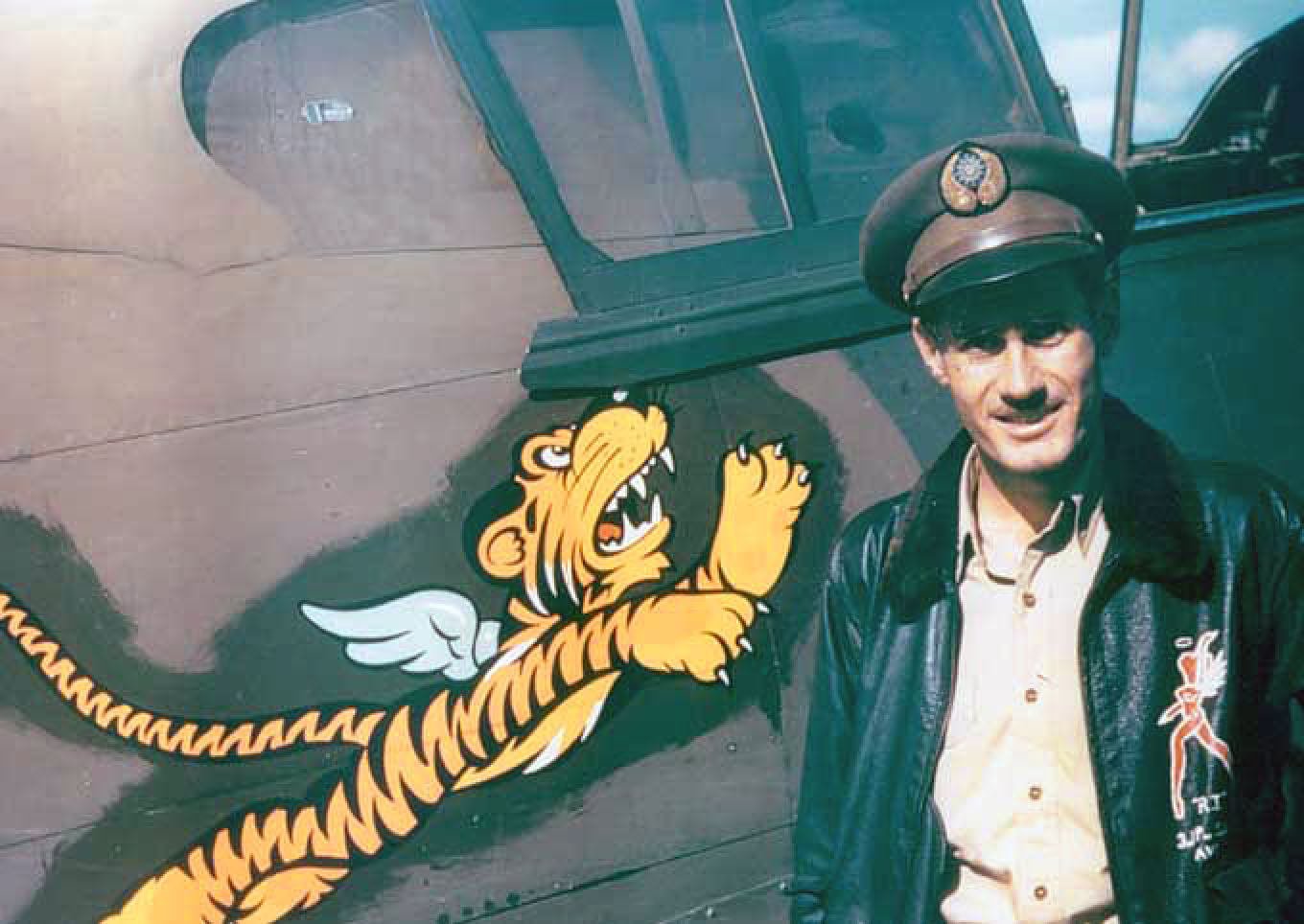
Consequently, American newspapers loved the Flying Tigers, breathlessly writing up their exploits and holding their pilots up as war heroes. In 1942, Hollywood star John Wayne rushed through a “flag-waver” patriotic film celebrating their adventures.
Unbeknown to anyone in China at the time, the winged-tiger emblem that gave the somewhat anonymous AVG its far cooler name had come courtesy of none other than the Walt Disney Company’s art department, on West Alameda Avenue, Burbank, California.
One reporter, introducing the Flying Tigers to the American public, wrote, “It is paint and brush as well as superior airmanship that is sending the Japanese crashing earthwards.”
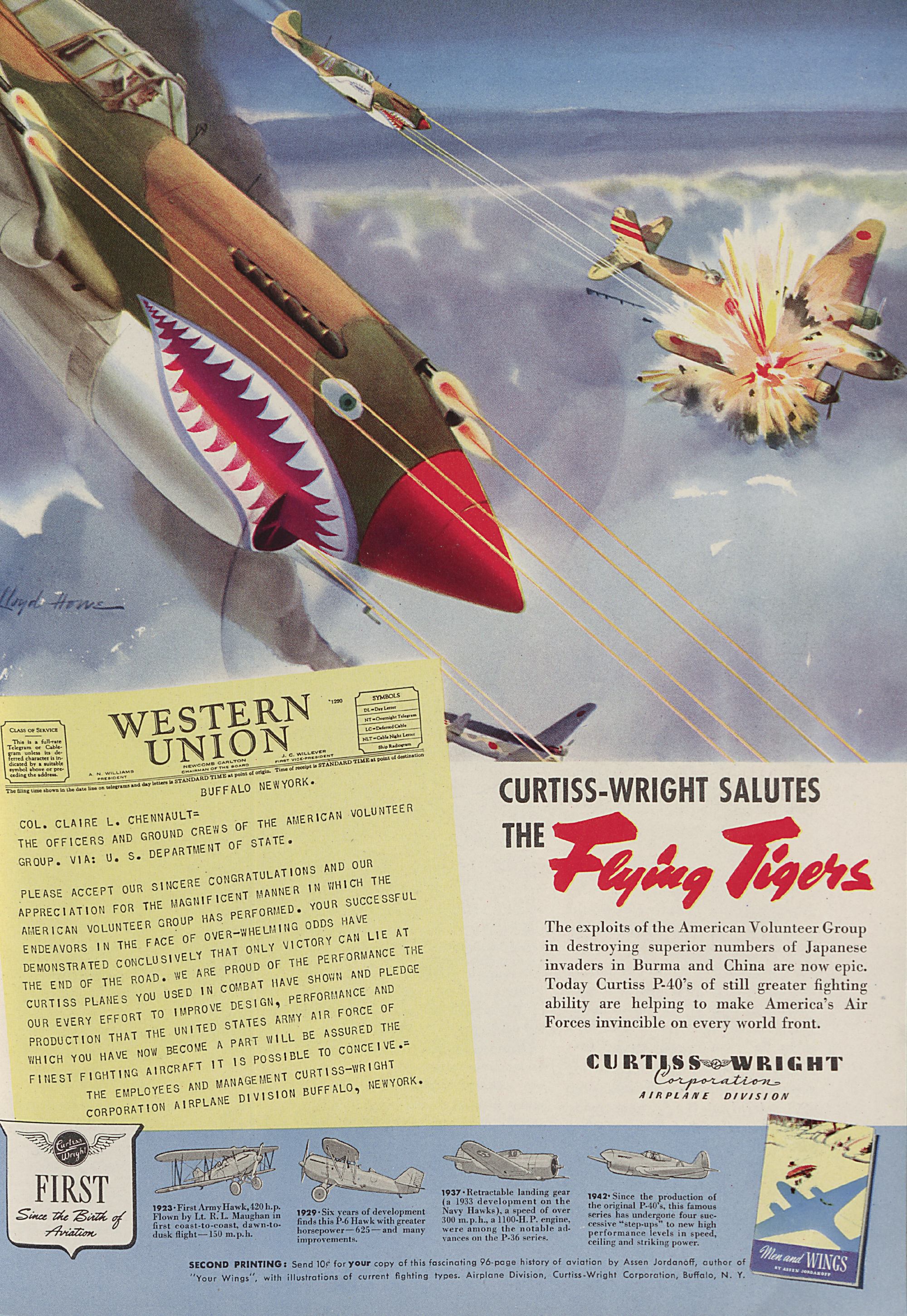
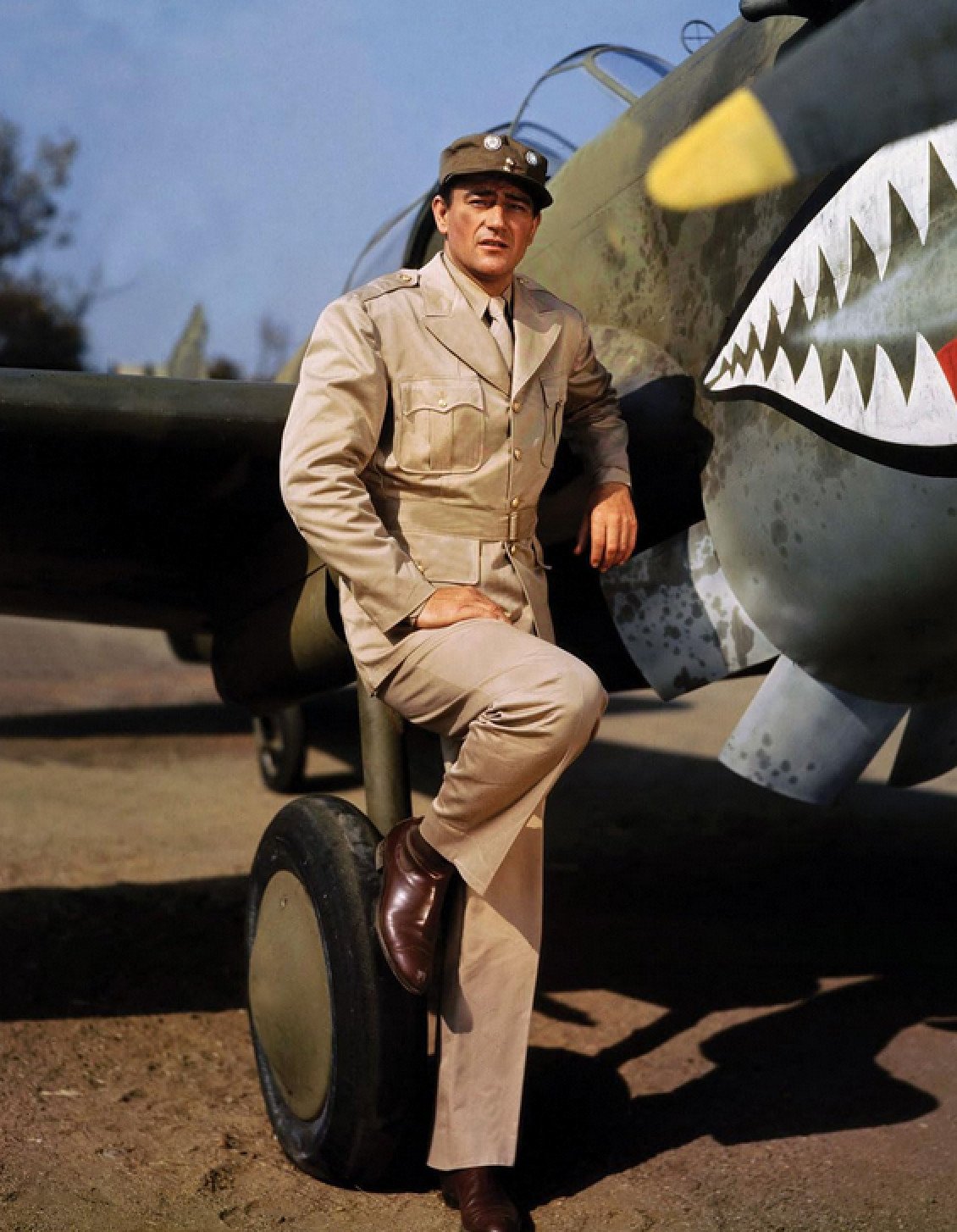
Like other US corporations, Disney swung into the war effort after the shock attack at Pearl Harbour in Hawaii. Its massive studios produced training films and educational shorts, gratis, for the government.
Walt Disney himself told the papers, “I don’t like to profit during war […] when people are out there giving up their lives.”
But it wasn’t just about lending infrastructure to the cause, Disney’s in-house artists created more than 1,200 insignia for military units and specially created government departments, including the Women Airforce Service Pilots (WASPs) and America’s vast Lend-Lease programme to supply Allied nations.
It also allowed Mickey and Donald to be used to adorn US Air Force bombers. But perhaps the best known and widely commented-on emblem Disney created during the war was the winged tiger cub.
The origin of the image, though, is not so straightforward. T.V. Soong, China’s minister of foreign affairs and Chiang’s brother-in-law, ran an organisation staffed by Americans and based in Washington called China Defense Supplies.

The organisation’s primary task was to procure and ship war munitions from the US to China, and Soong also asked Walt Disney to design a logo for the AVG.
Wartime myth has always credited Chennault with the concept, but, according to Walton Rawls, author of Disney Dons Dogtags (1992) and a Disney historian who has looked closely at the company’s war effort, sole authorship in a collective environment such as Disney’s art studios would have been rare.
Whatever the case, Henry “Hank” Porter would have been involved. He was head of the company’s Publicity Art Department during the war, and oversaw and advised on logo and insignia creation.
Rawls posits that it may have been Porter who drew the final logo, though the idea of a winged tiger was conceived and first roughly sketched out by a Disney animation artist called Roy Williams.
In Way of a Fighter, Chennault gives the credit to Williams, who in several interviews gives the credit to Porter. Williams also claimed, in the American History Illustrated magazine in the 1970s, that Walt Disney himself signed off all final insignia designs and had his own tips to make the logo better. It was clearly a joint enterprise.
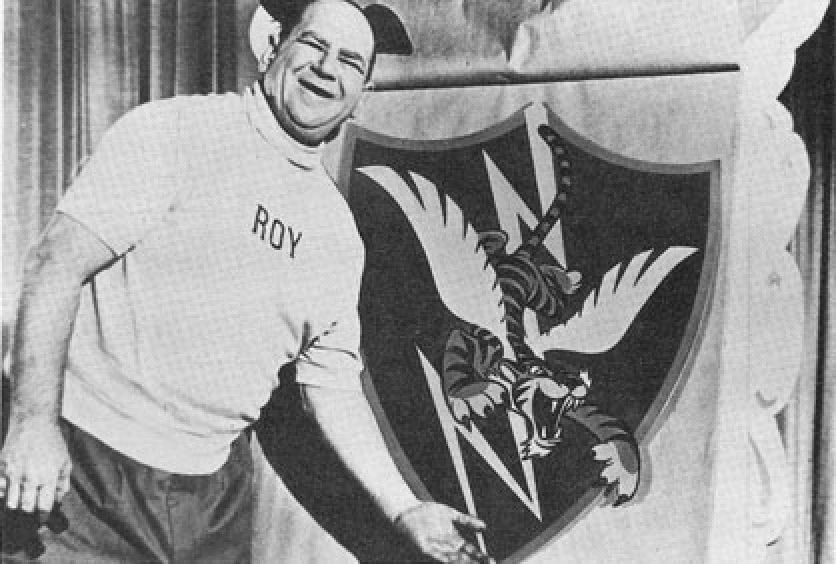
Originally from upstate New York, Porter had moved to Los Angeles and joined Disney in 1936. He was put to work immediately on Snow White and the Seven Dwarfs but was soon promoted to head of Disney’s Publicity Art Department, the division that oversaw anything that went out to the public as marketing or publicity under the Disney brand.
Before the war he had designed many of the corporation’s best-known insignias and was one of the few artists authorised to reproduce Walt Disney’s signature on artwork.
Porter really came into his own during World War II, fielding the plethora of requests for wartime emblems and logos that flooded into Disney.
According to the cartoon art historian and Disney specialist David Bossert, Porter “created more than a thousand insignia and emblems for various branches of the military, US government agencies, and charity organisations involved in the war effort”.
Porter devised a cartoon mosquito emblem for the patrol torpedo (PT) boat squads, as well as the famous “Phoebe the Female Seabee” for the US Navy’s Construction Battalions, known colloquially as the Seabees (“CB” from Construction Battalion).
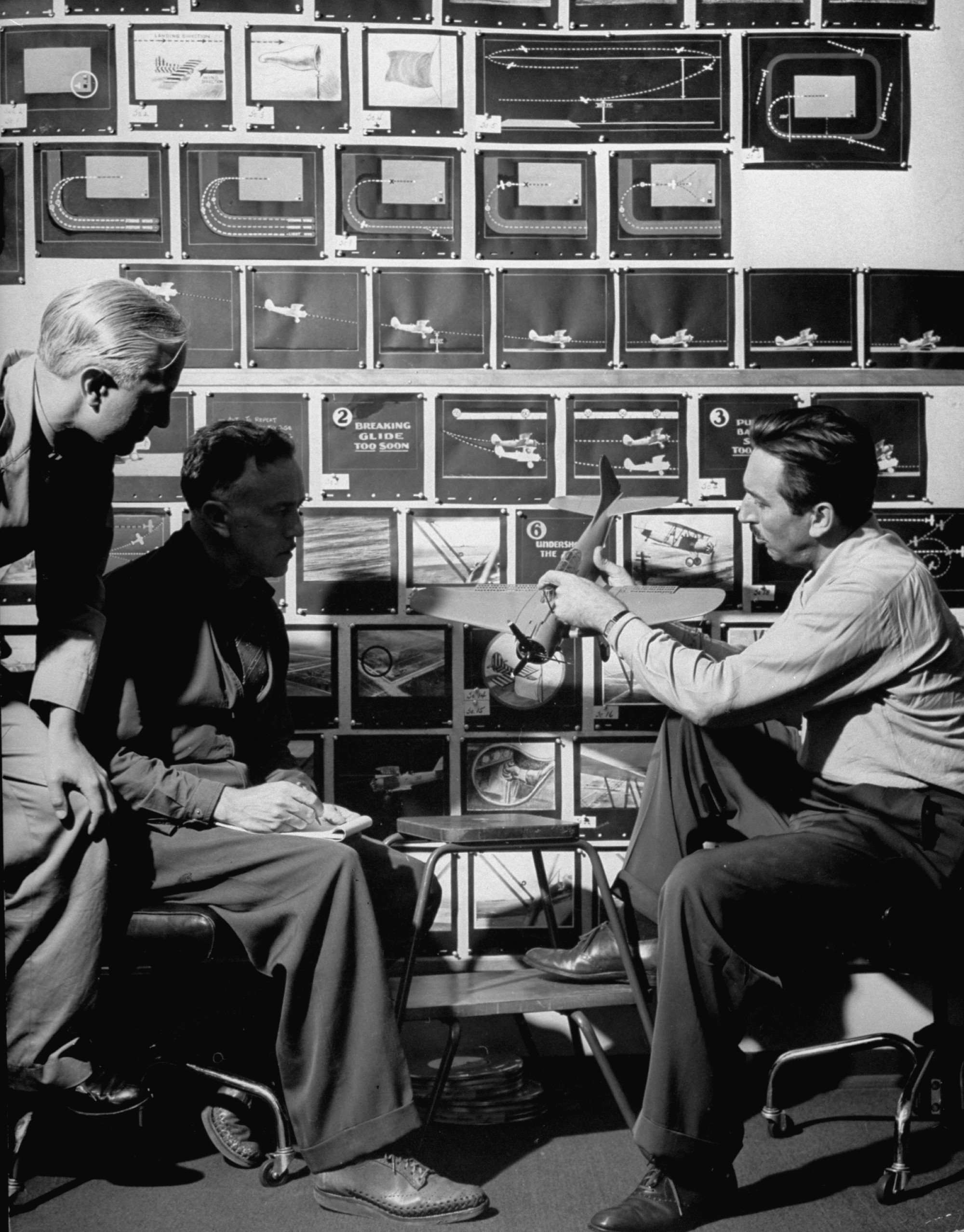
He also designed the tough-guy figure, “The Rock”, for the Navy’s submarine base at Pearl Harbour – a well-muscled cartoon fish wearing a sailor’s cap and boxing gloves sitting on an anchor looking ready to take on all comers.
Porter’s designs mixed elements of comedy as well as resilience and steadfastness. Eye-catching, but emblematic of the core values of the client. He regularly chose to incorporate the V for Victory theme, which is an integral part of the Flying Tiger logo, too, as he did on his designs for everything from war bond certificates to milk bottles.
Williams had grown up in Los Angeles and joined Disney in 1930, personally hired by Walt. Williams was an animation artist, but also a story developer, working on legions of the Mickey Mouse short cartoons.
During the war he continued to storyboard and draw, working on classic Disney fare such as Saludos Amigos (1942), The Three Caballeros (1944), and a whole bunch of Donald Duck cartoons. But he also worked with Porter’s Publicity Art Department designing more than 100 insignias, including that of the Flying Tigers.
The logo became instantly popular in China as well as in neighbouring countries that were also fighting the Japanese, like Burma.

In his 2014 book, Service with Character: The Disney Studio and World War II, another Disney historian, David Lesjak, writes that Chennault reported back to Walt Disney in California that his men liked the design very much. The Flying Tigers gave Porter a gold pin of the emblem as recognition for his role in helping to create it.
Street artists in China and Burma soon got to work replicating the logo on jackets, flags, souvenir cards and patches. The pilots and crew had leather flying jackets adorned with the emblem.
Each time it was reproduced the logo changed slightly – the tiger adorned with an Uncle Sam hat, a star placed above the wings, the tiger taking on a more Asian countenance than the original – but nobody worried. It was all about supporting China’s struggle against Japan and all about supporting the AVG.
However American, the Flying Tigers went on to symbolise China’s struggle, becoming the most compelling visual of resistance against Japan.
Chiang declared, “Since the Flying Tigers first spread their wings in the skies above China, the enemy has learned to fear the intrepid spirit they have displayed in face of his superior numbers. They have become the symbol of the invincible strength of the forces now upholding the cause of justice and humanity. The Chinese people will preserve forever the memory of their glorious achievements.”

Across the three squadrons of the Flying Tigers there were 19 “aces” – pilots credited with shooting down five or more enemy aircraft during aerial combat.
Five of them were “double-aces” – and all superbly defended the skies over China during the war, boosting morale at a time when it seemed Tokyo had the upper hand, and showing that the fight against Japan was not one to be borne by China alone, but by all the Allies.
In March 1943, the Flying Tigers, along with their shark-tooth nose cone and leaping winged tiger emblem, were absorbed into the US 14th Air Force, based at Kunming, and then once again into the US 23rd Air Force Fighter Group that provided air protection at the Chinese end of the famous “Hump” resupply route from India, over the Himalayas to Yunnan province.
Williams went on to find fame with a whole generation of post-war American kids as “Big Roy” on The Mickey Mouse Club television show, alongside the child Mouseketeers.
He later served as a goodwill ambassador for Walt Disney Studios, and is credited with designing the famous mouse ears, sold by the million in every Disney store and theme park worldwide. They even named the airport at Joshua Tree in southern California after him.

Porter died of cancer not long after the war, but he lived long enough to hear of the Flying Tigers chasing Japanese fighters as far as Burma, Bangkok, French Indochina, and even across the strait to Taiwan.
After the war, a bolt of lightning behind the winged tiger replaced the V for Victory theme, and the 23rd Fighter Group retains the emblem to this day.

